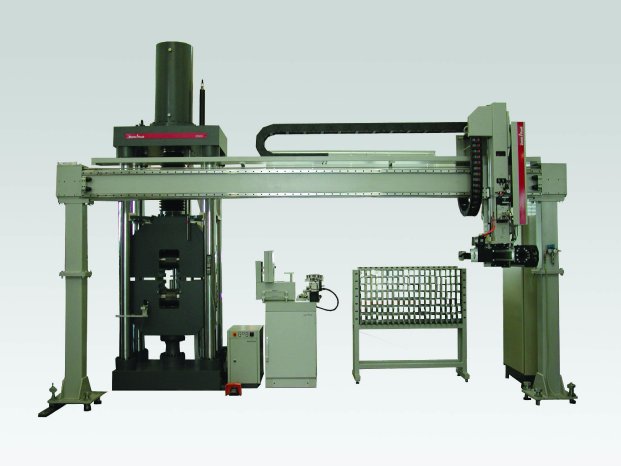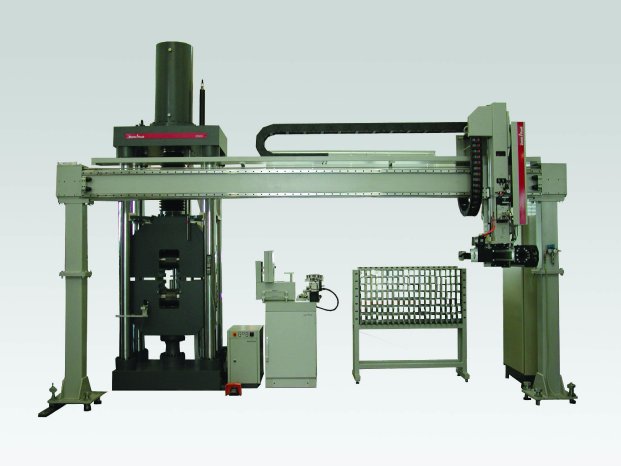The operator simply places the test specimen in one of 133 positions in a heavy duty magazine, and a "portal" robotic handing system then takes over the process. With its multi-axis gripping head it removes the first specimen from the magazine and places it into a measurement and alignment unit. This ensures that the specimen is correctly aligned in the testing machine. The cross-section measurement unit is fully automatic and uses precision high resolution digital sensors to measure the width and thickness.
The sample is then removed from the cross section measuring unit and placed in the hydraulic grips of the tensile testing machine. The grips are closed automatically to a fixed pressure defined in the software or as a func-tion of the measured cross-sectional area of the test specimen. This ensures the optimum gripping parameters are determined for each individual tensile test.
The testing machine is a hydraulic 4-column construction with a capacity of 2000 kN and is fitted with Zwick's digital macro extensometer used by many steel producers worldwide. This automatic device measures the elongation to failure as well as proof stress (offset yield). At the end of the test the ex-tensometer is detached from the specimen, the robot grips one end of the test specimen and the hydraulic grip is opened. This is repeated for the other half of the specimen and the grips are then returned to their starting position for the next test. For additional investigations, the specimen remains can be sorted into different locations depending on the result of the tensile test.
As with most Zwick products the entire test is under the control of testXpert II® software. All control parameters for the test can be entered manually or imported automatically via on-line databases. At the end of the test, the re-sults can be printed on a test report, exported to an external database or Mi-crosoft Office program, and/or stored in a special data file with all control pa-rameters used for the test.
The major benefit of this system is that it provides a much safer working envi-ronment and avoids repetitive processes for operators enabling them to be deployed on much more important tasks. Because of improved testing effi-ciency the system generates tests results faster, with significantly higher integrity, and is quickly amortized.


